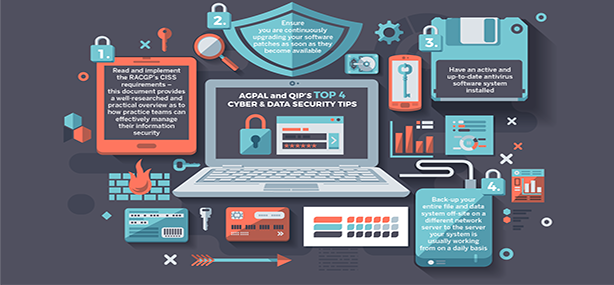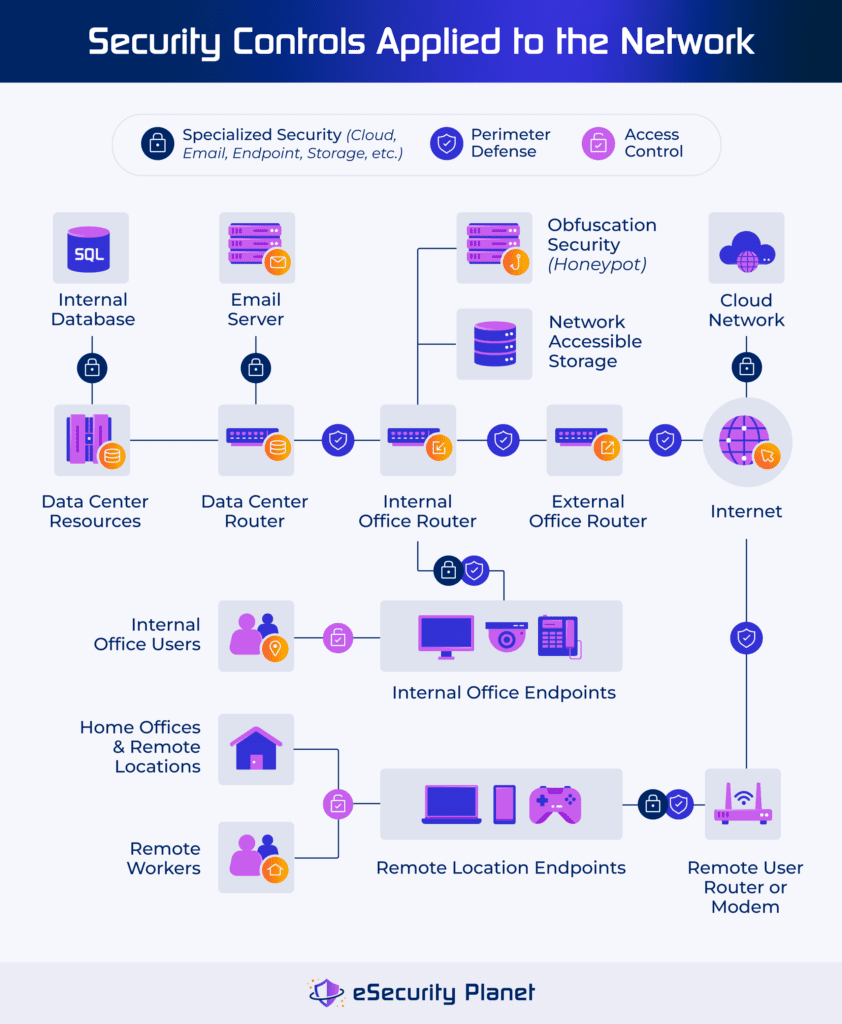FFT Pipeline Protection: Advanced Technologies to Safeguard Your Pipeline Infrastructure
FFT Pipeline Protection: Advanced Technologies to Safeguard Your Pipeline Infrastructure
Blog Article
The Essential Duty of Data and Network Protection in Safeguarding Your Information
In an era where information breaches and cyber risks are increasingly prevalent, the importance of durable data and network protection can not be overstated. Organizations should not only protect sensitive details yet also make certain conformity with evolving regulative requirements. The implementation of reliable protection measures, such as encryption and accessibility controls, is vital to maintaining depend on and operational honesty. The landscape of cyber dangers is frequently changing, raising concerns about the adequacy of existing methods and what brand-new approaches might be necessary to stay in advance of prospective hazards. What exists ahead in this complex safety atmosphere?
Comprehending Information Safety And Security
In today's digital landscape, a frustrating majority of organizations come to grips with the complexities of data security. This important component of info modern technology includes securing delicate information from unauthorized accessibility, corruption, or theft throughout its lifecycle. Information safety includes various approaches and innovations, including file encryption, gain access to controls, and data masking, all intended at securing info against violations and susceptabilities.
An essential aspect of information safety and security is the recognition and category of information based upon its level of sensitivity and value. This classification helps companies prioritize their safety efforts, assigning resources to shield the most crucial information efficiently. In addition, executing durable plans and treatments is important to guarantee that workers comprehend their role in keeping information safety and security.
Regular audits and assessments help in identifying potential weaknesses within an organization's data safety structure. Additionally, staff member training is important, as human mistake remains a considerable consider data violations. By fostering a society of safety awareness, organizations can minimize threats related to expert risks and carelessness.
Importance of Network Safety
Network safety and security stands as a foundation of a company's general cybersecurity strategy, with about 90% of services experiencing some type of cyber danger in recent times. The value of network security depends on its ability to safeguard sensitive information and maintain the honesty of service procedures. By guarding network infrastructures, companies can prevent unapproved gain access to, information breaches, and other harmful tasks that could endanger their properties and credibility.
Applying robust network security measures not only aids in mitigating risks but likewise cultivates trust among stakeholders and customers. When customers are guaranteed that their personal and financial info is safe, they are most likely to involve with the organization, causing enhanced consumer commitment and service growth.
Moreover, a well-structured network security framework helps with conformity with different regulative requirements. Organizations needs to comply with industry criteria and lawful mandates worrying data security, and effective network safety and security practices can guarantee conformity, therefore staying clear of prospective penalties.

Typical Cyber Risks
Organizations must stay vigilant versus a range of cyber dangers that can undermine their network safety and security initiatives. Among one of the most common hazards is malware, which incorporates viruses, worms, and ransomware that can interfere with operations, swipe data, or hold info hostage. Phishing assaults, where malicious actors impersonate trusted entities to trick individuals into revealing delicate info, continue to expand in sophistication, making customer education and learning critical.
An additional widespread hazard is distributed denial-of-service (DDoS) assaults, which overload systems with website traffic, providing them unavailable to legitimate customers. Expert threats, whether intentional or unintentional, position significant risks as workers might inadvertently subject delicate data or intentionally manipulate their access for malicious purposes.
Additionally, vulnerabilities in software application and hardware can be manipulated by cybercriminals, highlighting the significance of normal updates and spot monitoring. Social design methods further complicate the landscape, as assaulters manipulate people right into disclosing secret information via mental adjustment.
As these dangers evolve, organizations must preserve an aggressive approach to identify, minimize, and react properly to the ever-changing cyber risk landscape, guarding their beneficial details and preserving trust with stakeholders. fft pipeline protection.
Finest Practices for Protection
Carrying out robust safety procedures is crucial for safeguarding sensitive info and keeping operational stability. Organizations should begin by carrying out extensive danger analyses to recognize susceptabilities within their systems. This aggressive approach makes it possible for the prioritization of safety initiatives customized to the particular demands of the organization.
Adopting solid password policies is crucial; passwords should be complicated, consistently changed, and managed using secure password administration tools. Multi-factor authentication (MFA) adds an added layer of safety and security by calling for added verification techniques, thus decreasing the risk of unauthorized accessibility.
Normal software application updates and spot management are important to protect against understood vulnerabilities. Executing firewall softwares and intrusion detection systems can better protect networks from exterior dangers. Worker training is equally important; personnel should be enlightened on identifying phishing attempts and recognizing the relevance of information protection methods.
Information file encryption need to be employed for sensitive information, both at rest and en route, to guarantee that even if data is intercepted, it continues to be hard to reach (fft pipeline protection). Finally, companies have to create and on a regular basis test case feedback intends to make sure speedy action in case of a security breach. By sticking to these ideal practices, organizations can enhance their protection stance and protect their critical information possessions
Future Trends in Security
The landscape of information and network safety and security is continuously developing, driven by innovations in innovation and the boosting class of cyber threats. As companies significantly adopt cloud computer and IoT devices, the standard of security will certainly shift toward a zero-trust model. This approach emphasizes that no entity-- interior or exterior-- is naturally trusted, mandating verification at every accessibility point.
In addition, making use of synthetic knowledge and artificial intelligence in safety methods is on the increase. These modern technologies enable anticipating analytics, enabling companies to Continue identify vulnerabilities and possible risks prior to they can be manipulated. Automation will likely play an essential role in improving security actions, reducing the moment taken to alleviate Discover More violations.
Additionally, regulative frameworks will continue to tighten, requiring more rigid compliance steps. Organizations should stay abreast of advancing regulations to ensure they fulfill protection criteria.

Conclusion
In final thought, the relevance of information and network security can not be overemphasized in the modern digital landscape. With the frequency of cyber threats and the enhancing complexity of regulative demands, companies should take on comprehensive safety and security procedures to protect sensitive info. By applying effective methods and remaining educated concerning emerging trends, companies can improve their strength against potential attacks, making certain information integrity and fostering count on amongst clients and stakeholders. Prioritizing safety continues to be essential for functional continuity and long-lasting success.
In an age where information breaches and cyber threats are significantly widespread, the significance of durable data and network security can not be overstated. Information safety encompasses various methods and technologies, including file encryption, gain access to controls, and data cyber security information masking, all intended at securing info versus breaches and vulnerabilities.
A fundamental aspect of data security is the recognition and classification of data based on its level of sensitivity and significance.The landscape of information and network protection is continually developing, driven by developments in technology and the enhancing sophistication of cyber risks.In conclusion, the importance of data and network safety can not be overemphasized in the modern digital landscape.
Report this page